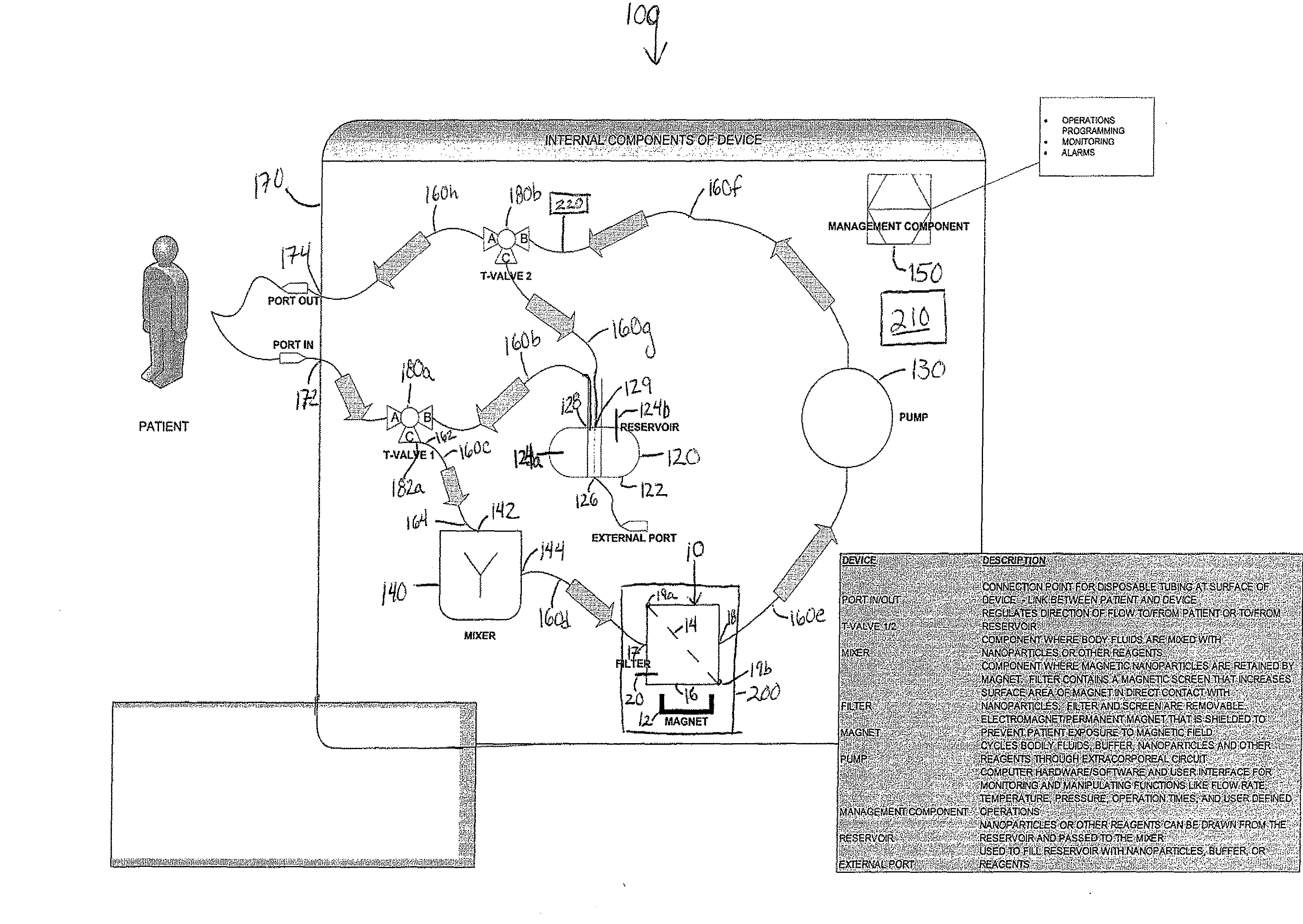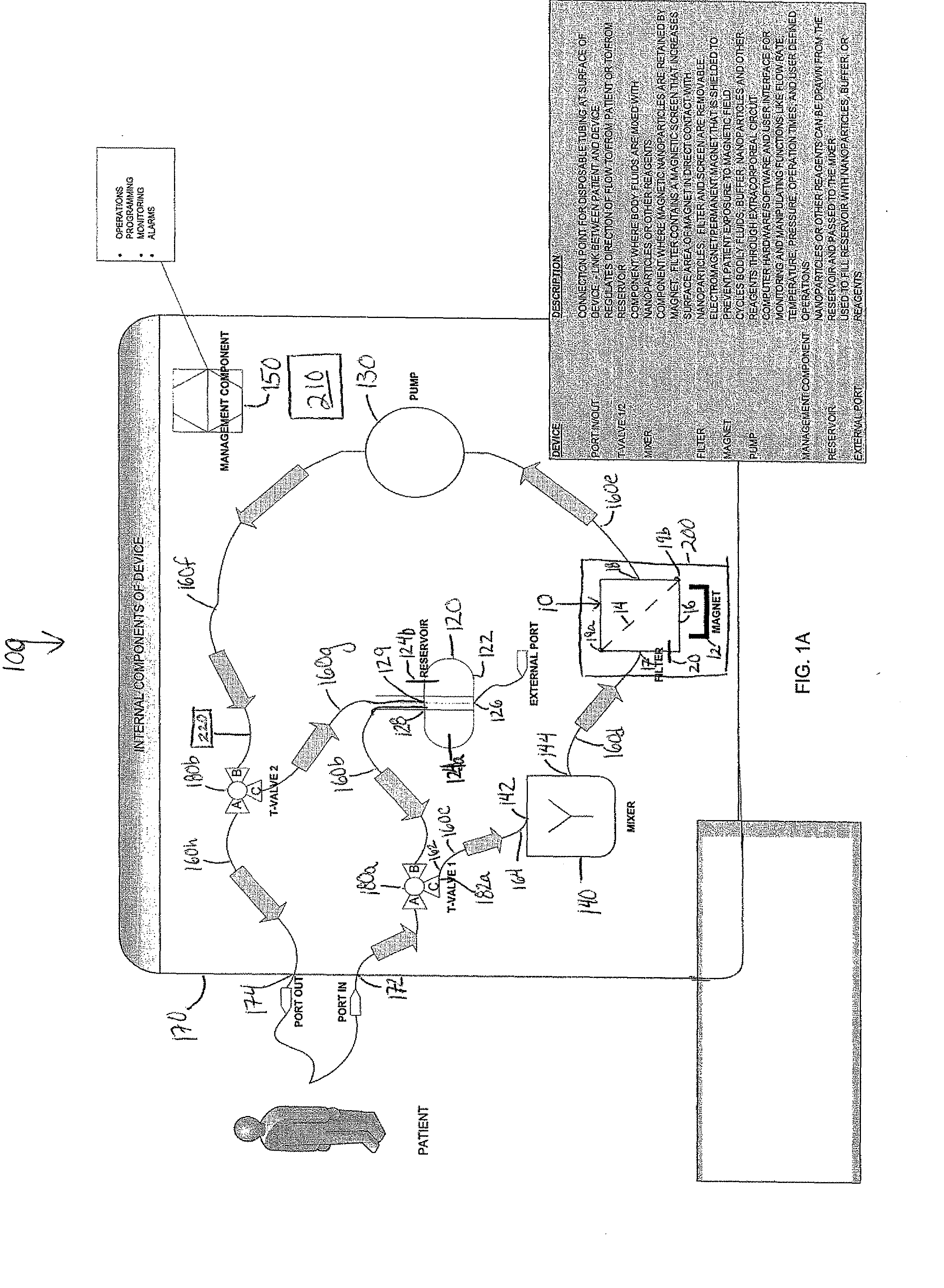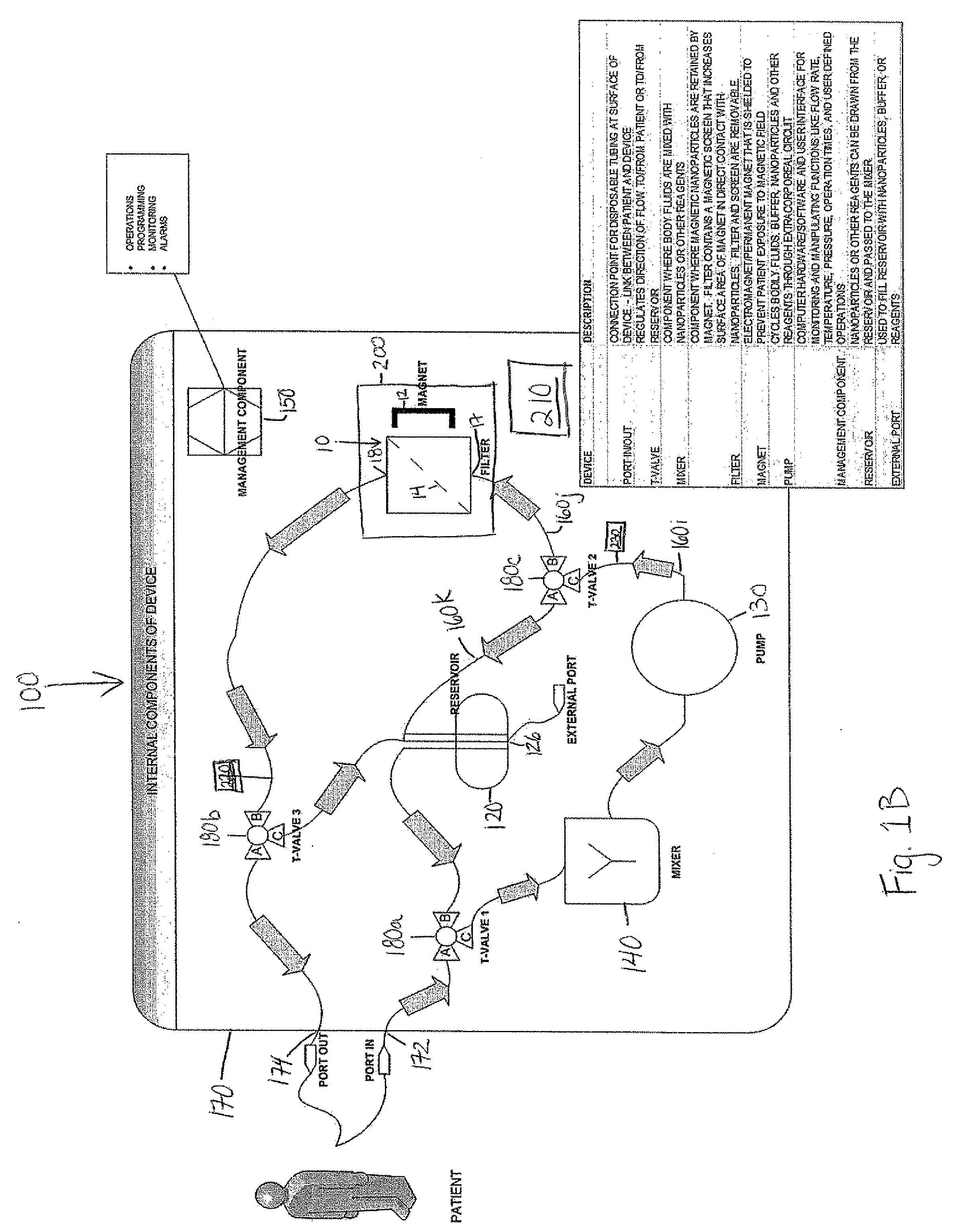Device and method of using superparamagnetic nanoparticles in treatment and removal of cells
a superparamagnetic nanoparticle and cell technology, applied in the field of devices and methods for using and removing magnetic nanoparticles, can solve the problems of high invasiveness, malignant cells will have broken free and be left, and the procedure is surgical in nature, so as to achieve the effect of removing nanoparticles from patients
- Summary
- Abstract
- Description
- Claims
- Application Information
AI Technical Summary
Benefits of technology
Problems solved by technology
Method used
Image
Examples
example 1
In Vitro Capture of Murine Cancer Cells with Superparamagnetic CoFe2O4 Nanoparticles Coated with Peptide
[0224]Preparation of CoFe2O4 Nanoparticles with a Biocompatible Polymer Coating and with YSA Peptide Conjugation
[0225]The superparamagnetic CoFe2O4 nanoparticles were synthesized with a micelle method, and the mean diameter was 8 nm with a size distribution of less than 15%. The detailed experimental procedures are reported in Scarberry, et al., “Magnetic Nanoparticle-Peptide Conjugates for in Vitro and in Vivo Targeting and Extraction of Cancer Cells”, J. Amer. Chem. Soc'y., 130 (31), 10258-10262 (2008).
[0226]The nanoparticles (200 mg) and polygalacturonic acid (600 mg, Alfa Aesar) were added into 80 mL of 5 M NaOH solution at ambient temperature. After sonication for 5 h with a Model 60 Sonic Dismembrator (Fisher Scientific), the coated nanoparticles were separated from the solution using a magnet. After being washed a few times with water, the coated nanoparticles were resuspen...
example 2
In Vitro Binding of Superparamagnetic CoFe2O4 Nanoparticles Coated with Peptide to Cells in Human Ascites Samples
[0258]Nanoparticle Synthesis
[0259]The superparamagnetic CoFe2O4 nanoparticles were synthesized with a microemulsion technique and the mean diameter was 8 nm with a size distribution of less than 15%. The detailed experimental procedures are reported in Scarberry, et al., “Magnetic Nanoparticle-Peptide Conjugates for in Vitro and in Vivo Targeting and Extraction of Cancer Cells”, J. Amer. Chem. Soc'y., 130 (31), 10258-10262 (2008).
[0260]Nanoparticle Coating and Peptide Conjugation
[0261]600 mg of CoFe2O4 nanoparticles were added to 300 mL of 5M NaOH and sonicated for 10 min (Model 60 Sonic Dismembrator (Fisher Scientific)—power setting of 19). 1800 mg of glucuronic acid was added to the solution and sonication continued for 1.5 hours. The product was magnetically separated using a 5000 gauss magnet, washed 3× in PBS and resuspended in 600 mL of distilled H2O, bringing the n...
example 3
Ovarian Cancer Study in Mice
[0311]An ovarian cancer survival study was conducted to evaluate whether the capture and removal of disseminated tumor cells could be employed as a curative measure to mitigate metastasis and thereby increase longevity. A murine ovarian cancer cell line (ID8 GFP VEGF) transfected with the gene for green fluorescent protein (GFP) and vascular endothelial growth factor (VEGF) expression was used for the study. VEGF expression can expedite tumor progression by stimulating angiogenesis and abating the immune response. The expression of GFP can be analyzed both qualitatively and quantitatively, providing a mechanism for tracking the dissemination of the malignant cells.
[0312]The mice used in the study were divided into two control groups and one experimental group. Each group received an intraperitoneal (I.P.) injection of 7 million IDS GFP VEGF cells. The first control group (Control A) contained 7 female C57BL / 6 mice (5-8 weeks old), which received no furthe...
PUM
| Property | Measurement | Unit |
|---|---|---|
| Density | aaaaa | aaaaa |
| Temperature | aaaaa | aaaaa |
| Flow rate | aaaaa | aaaaa |
Abstract
Description
Claims
Application Information
 Login to View More
Login to View More - R&D
- Intellectual Property
- Life Sciences
- Materials
- Tech Scout
- Unparalleled Data Quality
- Higher Quality Content
- 60% Fewer Hallucinations
Browse by: Latest US Patents, China's latest patents, Technical Efficacy Thesaurus, Application Domain, Technology Topic, Popular Technical Reports.
© 2025 PatSnap. All rights reserved.Legal|Privacy policy|Modern Slavery Act Transparency Statement|Sitemap|About US| Contact US: help@patsnap.com



